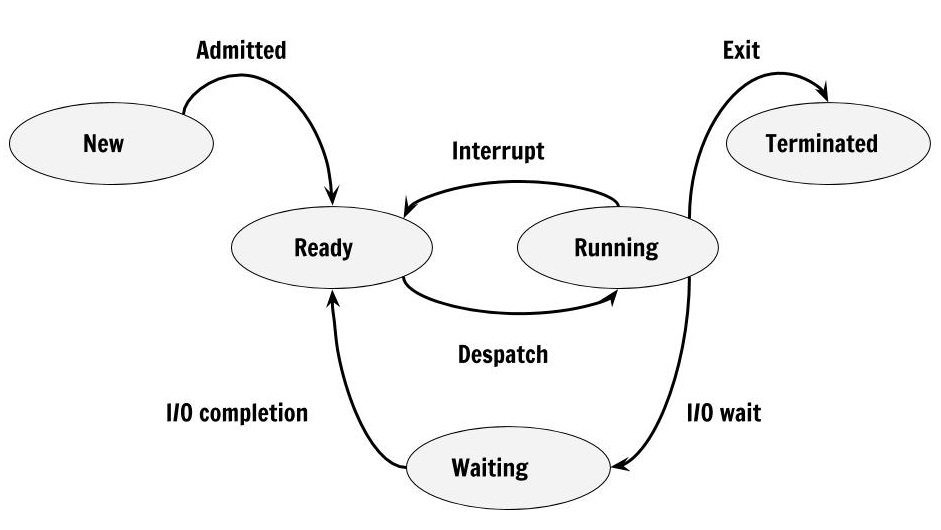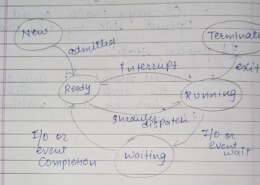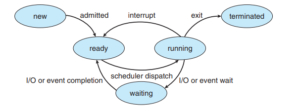How can we convert a CSV file to a TSV file? List different Strategies.
Operating systems manage memory allocation for applications through various techniques to ensure efficient usage and prevent issues like memory leaks and fragmentation. Memory Allocation Techniques: 1. Contiguous Allocation: Memory is allocated in contiguous blocks. Operating systems use techRead more
Operating systems manage memory allocation for applications through various techniques to ensure efficient usage and prevent issues like memory leaks and fragmentation.
Memory Allocation Techniques:
1. Contiguous Allocation:
Memory is allocated in contiguous blocks. Operating systems use techniques like segmentation (dividing memory into logical segments) and paging (dividing memory into fixed-size pages) to manage memory for applications.
2. Dynamic Allocation:
OS dynamically allocates memory based on application demands using techniques like:
– Heap Management:
Allocating memory from the heap as requested by applications. Techniques such as first-fit, best-fit, and worst-fit algorithms are used to find suitable memory blocks.
– Stack Management:
Allocating memory for function calls and local variables, managed using a stack data structure.
3. Preventing Memory Leaks:
Memory leaks occur when applications allocate memory but fail to release it after use, gradually depleting available memory. Techniques to prevent leaks include:
– Garbage Collection:
Automatic memory management where the OS periodically identifies and reclaims memory no longer in use.
– Manual Memory Management:
Encouraging developers to explicitly free allocated memory when it’s no longer needed.
4. Preventing Fragmentation:
Fragmentation occurs when memory becomes divided into small, unusable segments over time, reducing available contiguous memory. Techniques to prevent fragmentation include:
– Compaction:
Periodically rearranging memory to consolidate free space.
– Memory Pools:
Allocating fixed-size memory blocks for specific purposes to reduce fragmentation.
– Memory Reclamation:
Releasing unused memory back to the OS to manage larger contiguous blocks.
By implementing these techniques, operating systems can efficiently manage memory allocation, minimize issues like leaks and fragmentation, and ensure reliable performance for applications.
See less



Converting a CSV file to a TSV file involves changing the delimiter used in the file. Here are some common strategies for this conversion: Text Editor: Open the CSV file in a text editor like Notepad++ or Sublime Text. Use the "Find and Replace" feature to replace all commas (,) with tabs (\t). SaveRead more
Converting a CSV file to a TSV file involves changing the delimiter used in the file. Here are some common strategies for this conversion:
- Text Editor: Open the CSV file in a text editor like Notepad++ or Sublime Text. Use the “Find and Replace” feature to replace all commas (
- Spreadsheet Software: Import the CSV file into a spreadsheet application such as Microsoft Excel or Google Sheets. Once the data is displayed in the spreadsheet, export or save the file as a TSV file. This method automatically handles the delimiter conversion.
- Command Line Tools: Use command-line tools like
- Programming Languages: Write a script in programming languages like Python or R to read the CSV file and write it out as a TSV file. These languages provide libraries and functions to handle file operations and delimiter changes easily.
- Online Converters: Utilize online conversion tools or services that allow uploading a CSV file and converting it to TSV format. These tools are user-friendly and require minimal effort.
See less,) with tabs (\t). Save the file with a.tsvextension.awkorsedon Unix-based systems. These tools can be employed to replace commas with tabs in the file content, effectively converting it to TSV format.